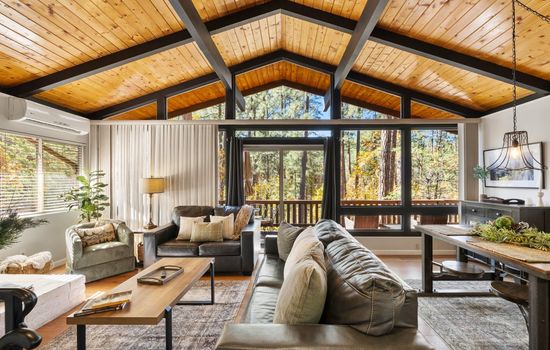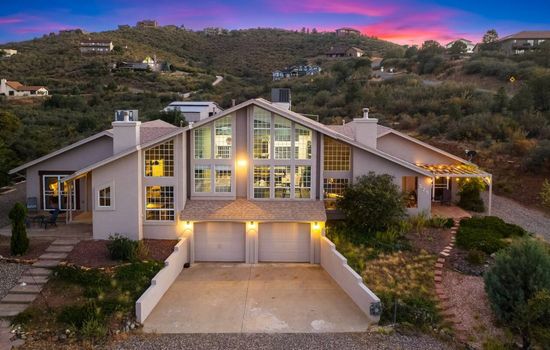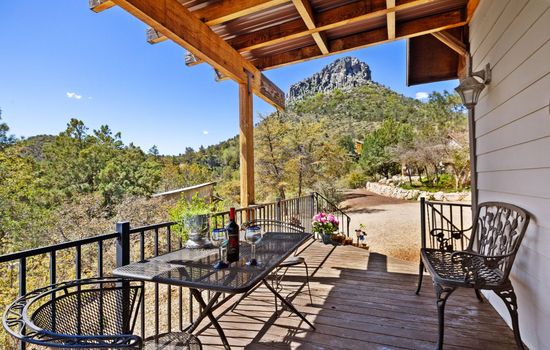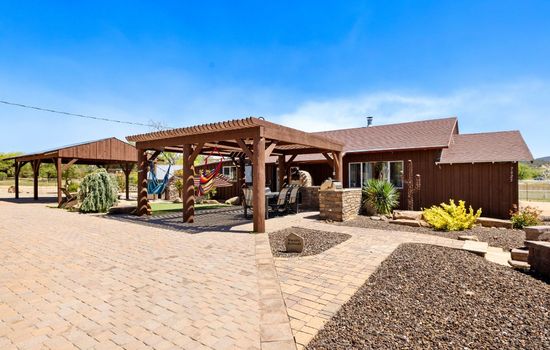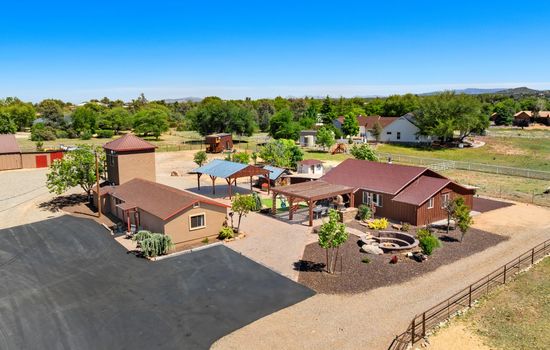There is no visitor center at Agua Fria National Monument. However, the Agua Fria National Monument Visitor Center is located inside the Black Canyon Heritage Park and is open daily.
Admission to Agua Fria National Monument is free, but permits are required for groups of more than 25 persons or for guides leading groups.
From Phoenix, take Interstate 17 north to exits 256, 259, or Cordes Junction, and traverse the scenic dirt roads to a surreal semi-desert mesa.
Parking is free in several on-site lots, including a main lot just before the trailhead. No overnight parking. Suitable for cars, smaller RVs, and motorcycles. No public transportation available.
Accessibility & permits
Emergency
- Cell service availability:Partial
Information not accurate?
Help us improve by making a suggestion.
Agua Fria National Monument, situated 40 miles north of Phoenix, Arizona, is a verdant oasis in the arid landscape of central Arizona. This 72,344-acre preserve, managed by the Bureau of Land Management, is a tapestry of prehistoric ruins, intricate petroglyphs, and vibrant wildlife.
As you travel along Interstate 17, the monument unfolds like a natural amphitheater, with the Agua Fria River carving through canyons and mesas that rise to elevations of about 4,500 feet. The Badger Springs Trail, a rugged hike or bumpy drive, leads to a canyon where ancient stone pueblos, some with over 100 rooms, stand sentinel. These ruins, part of the Perry Mesa Tradition, date back to between 1250 and 1450 CE and whisper tales of a long-abandoned civilization.
The landscape is a haven for wildlife, with antelope, deer, javelina, bobcats, and eagles thriving in the riparian forest. The air is alive with the songs of birds and the rustle of leaves in the gentle breeze.
While Agua Fria does not feature a lake, its scenic beauty and historical significance make it a compelling destination. Visitors can explore the remnants of ancient communities atop the mesas or delve into the canyon to discover petroglyph sites. Local outfitters offer guided tours that bring the monument’s rich history to life.
In the nearby town of Cave Creek, travelers can find artisan shops, gourmet restaurants, and boutique accommodations that complement the monument’s natural allure. As the seasons change, the monument transforms: spring brings blooms of desert flowers, summer days are punctuated by the occasional thunderstorm, and autumn paints the landscape with hues of gold and red.
For those seeking a deeper connection with nature and history, Agua Fria National Monument is an unforgettable experience, a place where the ancient and the natural converge in breathtaking beauty.
- Area (mi²)
- 113
- Annual visitors
- 80 000
- Established year
- 2000
Top 3 Facts about Agua Fria National Monument
The area is home to over 140 bird species and features a 129-kilometer-long river with native fish, including the endangered Gila intermedia, charalito, and desert pupfish. The elevation ranges from 660 to 1,400 meters.
In this sprawling semi-desert landscape, mule deer, javelina, and bobcats roam amidst mesquite, cottonwoods, and willows. Over 180 bird species, including eagles and raptors, inhabit the riparian corridors, while native fish swim in the river and its tributaries. Unique micro-habitats around wells and watering tanks support a diverse array of small mammals and songbirds, making this a paradise for wildlife enthusiasts.
Explore a landscape where Tertiary basalt flows from a dormant shield volcano overlay Precambrian rocks, creating an unconformity of at least 1 billion years. The desert grassland stretches across an extensive mesa, cut by canyon walls and a river, with elevations ranging from 2,000 to 4,000 feet. This rugged terrain is home to diverse wildlife, including coyotes, bobcats, and eagles, set against a backdrop of layered basaltic plateaus and ancient archaeological sites.
Family programs
- Junior Ranger
- Ranger-led Tours
- Self-guided Tours
- Workshops & Hands-on Activities
- Living History & Cultural Demos
- Scavenger Hunts
- Night Sky & Astronomy
- Family Camping & Overnight
- Arts & Crafts
- Water-based Adventures.
Travel Tips
Plan Ahead
Plan a few days for this wilderness adventure, especially during the cooler spring or fall seasons. Avoid summer due to extreme heat. Bring a 4WD vehicle, pack all necessities, and inform others of your route. No visitor center or paved roads; wear hiking footwear and stay hydrated. Rest often and bring meals as options are limited.
Pack Appropriately
Pack breathable clothing, sturdy hiking boots, and layers for temperature swings. Bring a wide-brimmed hat, sunscreen, and at least a gallon of water per person per day. Include a first-aid kit, GPS, and insect repellent. For camping, add a waterproof jacket, sleeping bag, and portable stove.
Respect Wildlife
Observe wildlife from a distance, never feed or approach animals. Control pets and avoid nesting areas. Respect local flora and fauna, especially during sensitive seasons like nesting or migration periods. Leave no trace and minimize your impact on the environment.
Stay Informed
Stay informed about weather, fire restrictions, and park rules. Exercise caution on trails, ledges, and near water. For emergencies, call 911 or park authorities at 928-634-5564.
Seasons
In spring, hike through blooming semi-desert grasslands and riparian forests, with temperatures in the 70s-80s°F. Witness petroglyphs and vibrant wildflowers. Ideal for outdoor enthusiasts, though no specific annual spring events are noted. Mild weather makes it a perfect time to visit.
Explore semi-desert grasslands and riparian forests in summer’s heat (90s-100s°F, June-August). Witness the monsoon rains and vibrant wildflowers. No specific summer events, but ideal for hiking and birdwatching amidst mature cottonwood and sycamore forests. Be prepared for intense heat.
Visit in fall, when temperatures range from 60 to 80°F, for mild hiking and wildlife viewing. Enjoy the serene landscapes and ancient petroglyphs without the summer heat. No specific annual events, but the comfortable weather makes it an ideal time to explore.
Winter brings mild temperatures, ranging from 40°F to 60°F, ideal for hiking and birdwatching amidst high chaparral and riparian areas, making it a serene and scenic time to visit.
Information not accurate?
Help us improve by making a suggestion.
Where to stay
Frequently Asked Questions
Ready to dive into what Agua Fria National Monument has to offer? Let’s tackle some of the burning questions you might have as you plan your visit!
-
The closest city to Agua Fria National Monument is Phoenix, Arizona, which is approximately 40 miles to the south. The monument is also near the communities of Black Canyon City and Cordes Junction.
-
Dogs must be on a leash to keep them and wildlife safe. This is important due to potential dangers like rattlesnakes and cactus. Leashes help protect both your pet and the natural environment.
-
Yes, parking is free. There is no cost to park your vehicle, including campers, trailers, and motorhomes. However, limited parking is available.
-
Explore the ancient Hohokam ruins at Pueblo La Plata, a massive settlement with nearly 100 rooms, by driving 8 miles down Bloody Basin Road and then hiking to the site. Hike the Badger Springs Trail to see petroglyphs and enjoy the scenic views of the Agua Fria River canyon. Camp overnight in the undeveloped areas along the canyon floor or atop the mesas, and keep an eye out for wildlife like antelope, deer, and eagles.

